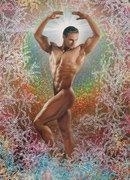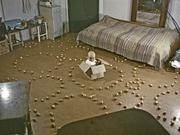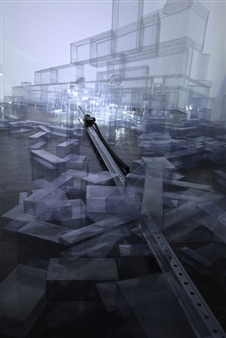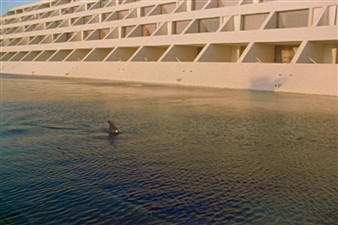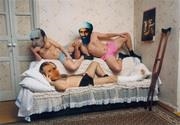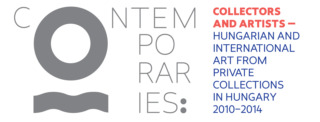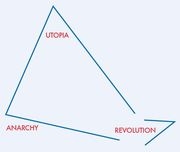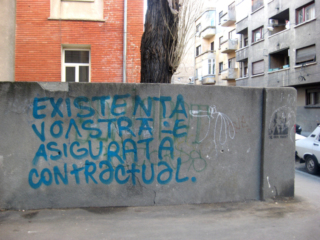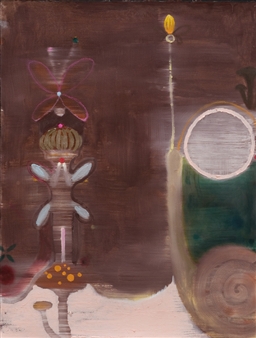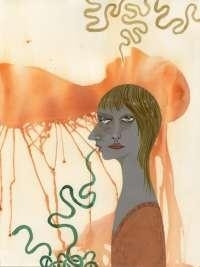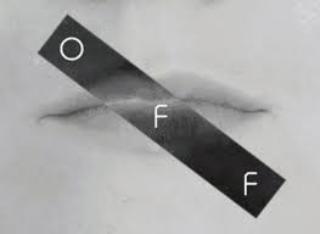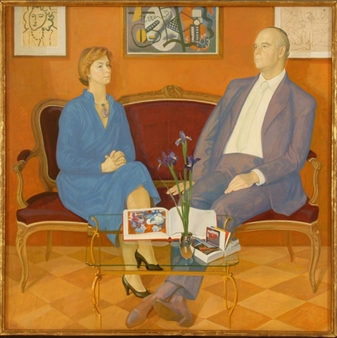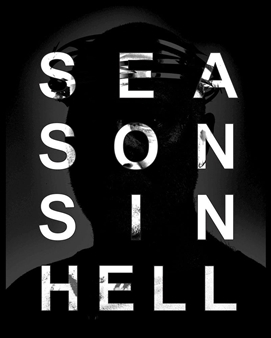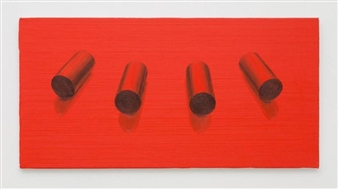Point of Meeting: EAST
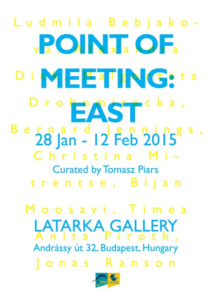
LATARKA, Budapest, Budapest, 01/28/2015 - 02/12/2015
Andrássy út 32., Budapest
Malgorzata Drohomirecka, Christina Mitrentse, Bijan Moosavi, Jonas Ranson, Alexandra Dick, Timea Anita Piróth, Ludmila Bebjakova, Bernard Jennings
curator | Tomasz Piars
openning | 28th January, 19:00
opening speech by Mucsi Mesi, art writer, independent curator
On view till | 12th February
Point of Meeting: EAST brings together a group of 6 international artists based in east London along with a Hungarian counterpart in LATARKA Gallery in Budapest from January 28th until February 12th 2015.
The exhibition includes works ranging from painting, silk screen prints, books and analogue film to sound, video and installations by artists Ludmila Bebjakova, Malgorzata Drohomirecka, Bernard Jennings, Christina Mitrentse, Bijan Moosavi and Jonas Ranson.
While these artists come from various backgrounds and are engaged with different practices, Point of Meeting: EAST aspires to be reflective of a fraction of the thriving hub of the east London art scene through artists who live and work in this habitat.
Ludmila Bebjakova is a London based artist with an interdisciplinary practice. Bebjakova’s practice examines the concept of relationships, notably perceptions of self and place, or self and others and place. Her interest is in the way we interpret a situation by reference to elements of our social and cultural history that impact onto our everyday experiences.
The work is made of site-specific settings, encompassing complementary medias such as light and video projection, sound, and the viewer who becomes a performer in the work.
Malgorzata Drohomirecka is fascinated by potentials of the 16mm film. As an abstract painter engaged with silk screen printing, 16mm film is where qualities of her painting enjoy the instant reproduction possibilities of the silk screen. By adding the dimension of time into the former silent still image, features of the 16mm film also open up possibilities for further exploration of texture and pattern in her work.
Bernard Jennings is an Anglo-French painter living in south-east London. After a traditional British art training, he travelled around the world for 10 years absorbing non western, aboriginal and shamanic art. His work is also influenced by graffiti, psychedelic and street art, producing eclectic yet unique imagery.
Christina Mitrentse is an international multidisciplinary London based artist, freelance curator and educator. She is known for constructing provocative narratives and poetic ensembles of idiosyncratic institutions through manifold processes of vintage book-sculpture, drawing, screen-printing, and productions of site-specific installations. i.e ‘Add To My Library’ a major international Book Art project Initiative and touring exhibition in Europe and UK. She is the founder of Bibliographic Data Flow ,an-ongoing systematic methodology and autonomous Reference Library, performed as an interactive Meta-Library designed to provoke changes in the material book while de-institusionalising it in the process.
Bijan Moosavi is a musician and a sound artist. He was born and raised in Iran and is residing in London at the moment. Moosavi’s practice usually takes shape in form of digital audio-visual projections and sculptural sound installations in order to develop a discourse around the aural cultures of the post-revolutionary Iran, in response to contemporary global socio-political situations.
He has shown his work in UK, Iran, Germany, Greece, UAE, Sweden and Turkey, including a group show at the Royal College of Art in London as part of the finalists’ exhibition for the Magic of Persia Contemporary Art Prize 2013. He has also self-released two music albums and performed his music in Germany, UK, Serbia, Turkey and Iran.
Jonas Ranson, print graduate of the Royal College of Art, is an artist based in East London whose work falls into two main categories, which encompass the twin strands of both Fine Art Practice and surface design.
Motifs offer terrains that engage with ideas of the exotic and synthetic. The rich quality of the printed colour in contrast with what is depicted sometimes draws connotations to beauty as well as the grotesque. Fabricating hand drawn images and blueprints initially on computer, traditional ornamentation is reconfigured as templates of abstracted information.
A dominant interest lies in the artistic momentum of filtering, leveling and balancing out the pictorial qualities of the source material. Achieved through treatment in both digital conversion and CMYK colour separation silkscreen technique, final pieces consist of large printed panels, which are visually complex and often cartographic in form.
Timea Anita Piróth, what is interest me is how can you represent intimacy, and personal experiences. That it can save the honest voice, but also get a different view. When I was making the video, my basic idea was that texts, which I quote how affects on my personal experiences. Most of them are from my favorite novels, and when I was reading them I could identifiy myself with the main characters, but at these parts of the stories the judgement on my own sex put me off the meditating. So I collected them together to set up that critical way of definig a person and find a solution in an act.
Alexandra Dick: What concerns me the most is the inner struggle of oneself, the recognition, understanding and acceptance of physical, mental and inner disabilities. To challengingly question the concept of normality and abnormality, to find ourselves through psychonalysis: this is the key and route to our personal freedom.
